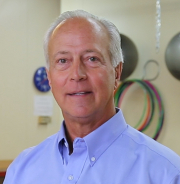As all golfers strive to improve their golf games, they have at their disposal a growing list of options available to them. The focal point has and will always be the PGA Club Professional. The PGA Club Pro is the best qualified person for instruction on the golf swing. Next, choosing the right clubs is extremely important and requires a professional evaluation by a club company's trained representative. Another significant option is entering a golf exercise program that will complement your commitment to improving your golf game.
I have evaluated and treated numerous PGA Tour, Champions Tour and amateur golfers over the past 20 years. During the last couple of years I have found a strong concern among all golfers regarding exercising for golf. When to start, how to start, and how to address their specific needs. Many PGA golf instructors have also approached me about the ability of their clients to implement the swing changes and advice they are conveying to them. Many golfers who are injured, have been injured, had surgeries or joint replacements present a unique challenge to those working with their swing mechanics.
To satisfy these concerns and to complement the instruction given by the PGA Club Professional, a Clinical Golf Performance Assessment that focuses on the physical capabilities of the golfer is of utmost importance. The CGPA evaluates the golfer's muscular and joint mobility, stability, and movement capability as well as considering their injury or surgical challenges that require medical input. Once assessed the golfer is given a meaningful, goal oriented exercise and therapy regime to address their specific physical needs. This approach has provided long needed professional guidance to two significant concerns: 1) that the golfer's exercises are specific to correcting and improving that golfer's musculoskeletal deficits detected on their assessment. No longer is the golfer given a general workout program, addressing non-specific entities which can create a musculoskeletal problem in the future or promote an existing problem; and 2) the PGA Club Professional is given support to their instruction which will complement their effectiveness as instructors. If their client cannot make a turn due to poor muscle sequencing, joint restriction or soft tissue adhesions, it will be detected and addressed so the golfer, instructor, and trainer can accomplish their goals.
I have utilized the CGPA for many years now on PGA golfers and it has become a significant part of their continuing effort to play better golf and add longevity to their game. Also, I utilize the assessment at the Bears Club in Jupiter, Florida implementing this assessment program for their members and PGA golfers. It has been extremely successful in complementing the entire golf program, bringing instructor, trainer and sports medicine specialist together for the benefit of the golfer.
Many assessment programs currently exist, but this is unique in that it offers proven medical and clinical principles of movement and is performed by Dr. Tom LaFountain, who has 19 plus years of experience working with golfers such as Phil Mickelson, Tiger Woods and Jim Furyk. It gives specific purpose to golf training programs and support to the PGA Club Professional. The objective is golfers playing better and longer - a result desired by all premier golf facilities.
Please click here for further information or to make an appointment with Tom.

